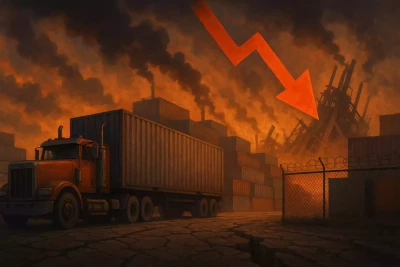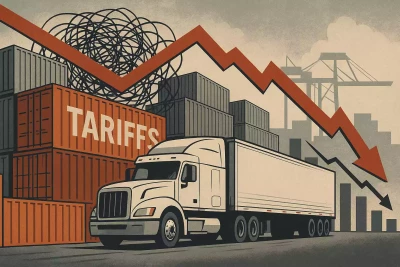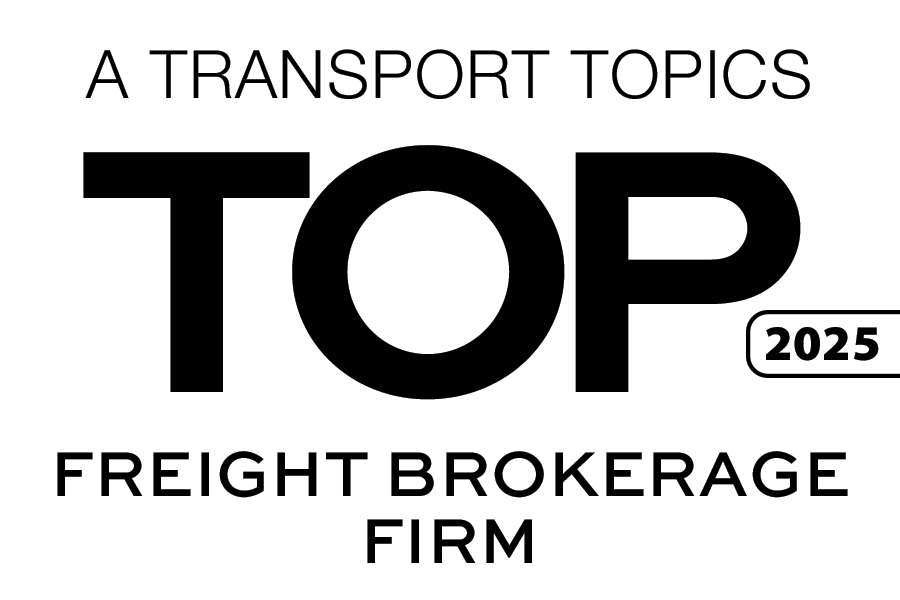Economic Pressure and Policy Chaos Are Reshaping Logistics
June 24, 2025
 The freight market is no stranger to cycles of boom and bust, but the current downturn has many in the industry calling it the worst they’ve ever seen. Unlike previous freight recessions that were swift and sharp, this one is notable for its duration, confusion, and complex contributing factors, especially shifting tariff policies and ongoing economic uncertainty.
The freight market is no stranger to cycles of boom and bust, but the current downturn has many in the industry calling it the worst they’ve ever seen. Unlike previous freight recessions that were swift and sharp, this one is notable for its duration, confusion, and complex contributing factors, especially shifting tariff policies and ongoing economic uncertainty.
“Normally it’s like ripping off the band-aid—you see volumes fall, but it’s over in a year,” says American Trucking Associations’ Chief Economist Bob Costello. “This was definitely over two years, probably more like two and a half.”
At the heart of today’s market disruption is a tangled web of tariffs. From tariffs linked to national security to those aimed at penalizing unfair trade practices, the United States is currently juggling multiple overlapping tariff strategies. The result? Chaos for shippers trying to anticipate costs and plan ahead. The average effective tariff rate has ballooned from under 2.5% prior to the current administration to nearly 30% at one point this year, currently sitting around 15.6%. That’s more than a 550% increase compared to where things stood just a few years ago.
This volatility creates a start-stop pattern in freight demand. Shippers rush to import goods before tariff hikes, then halt operations when rates spike. It’s a boom-and-bust cycle within the larger downturn, and it’s wreaking havoc on supply chain planning and freight volume consistency.
Will today’s chaos lead to calm tomorrow in the freight economy? Gain expert insights with the latest episode of the Stay In Your Lane Podcast.
While previous downturns have been painful but relatively short-lived, the current freight recession has dragged on for over two years. The pandemic-era freight surge created an unsustainable spike in demand, leading to a glut of capacity and inflated rates. But when demand normalized and then fell, many carriers were left holding the bag.
What makes this recession especially brutal is the combination of three compounding factors. Freight volumes are down, while rates are significantly lower than during the pandemic. Meanwhile, operating costs continue to rise. This trifecta has been particularly devastating for small and mid-sized fleets. Many are making interest-only payments on equipment, deferring maintenance, or holding off on critical upgrades. These short-term survival strategies could turn into long-term liabilities.
“Volumes are down, rates are down, but costs are up, and that is the killer,” says Costello. “That’s why so many folks are saying this is the worst they’ve ever seen.”
The market is gripped by caution. Whether it’s shippers delaying large projects or carriers waiting for more favorable rate conditions, everyone is holding steady, waiting to see how things play out. This wait-and-see approach is mirrored at the federal level as well. The Federal Reserve appears reluctant to make bold interest rate moves. And while some forecasted a stronger second half for 2025, the ongoing legal and economic headwinds suggest that any meaningful recovery may take longer than expected.
 One of the few certainties in the near term is continued contraction in industry capacity. As demand remains flat or even drops, more carriers and brokerages are likely to exit the market. In many cases, this won’t be a matter of strategic downsizing, but a forced retreat due to unsustainable financial conditions. Some regulatory changes, such as renewed enforcement of English-language requirements for drivers, could further shrink the driver pool. However, in a market with tepid demand, these shifts may not register as significantly—at least not yet.
One of the few certainties in the near term is continued contraction in industry capacity. As demand remains flat or even drops, more carriers and brokerages are likely to exit the market. In many cases, this won’t be a matter of strategic downsizing, but a forced retreat due to unsustainable financial conditions. Some regulatory changes, such as renewed enforcement of English-language requirements for drivers, could further shrink the driver pool. However, in a market with tepid demand, these shifts may not register as significantly—at least not yet.
Industry experts agree that while we may eventually land in a more balanced freight environment, the road to recovery will be anything but smooth. And with so many variables in play—tariffs, trade negotiations, legal battles, and inflation—forecasting has become more difficult than ever.
“I’ve never said this before in 27 years—but this forecast is only good for today. It could change this afternoon,” says Costello.
What’s clear is that this is a defining period for freight. Resilience, adaptability, and strategic thinking will be essential traits for shippers and carriers alike as they navigate an industry in flux.
In a market where everything can change overnight, having a knowledgeable logistics partner is more valuable than ever. Triple T Transport continues to monitor these developments closely, helping clients adapt with customized 3PL solutions that help to minimize risk and maximize flexibility.














